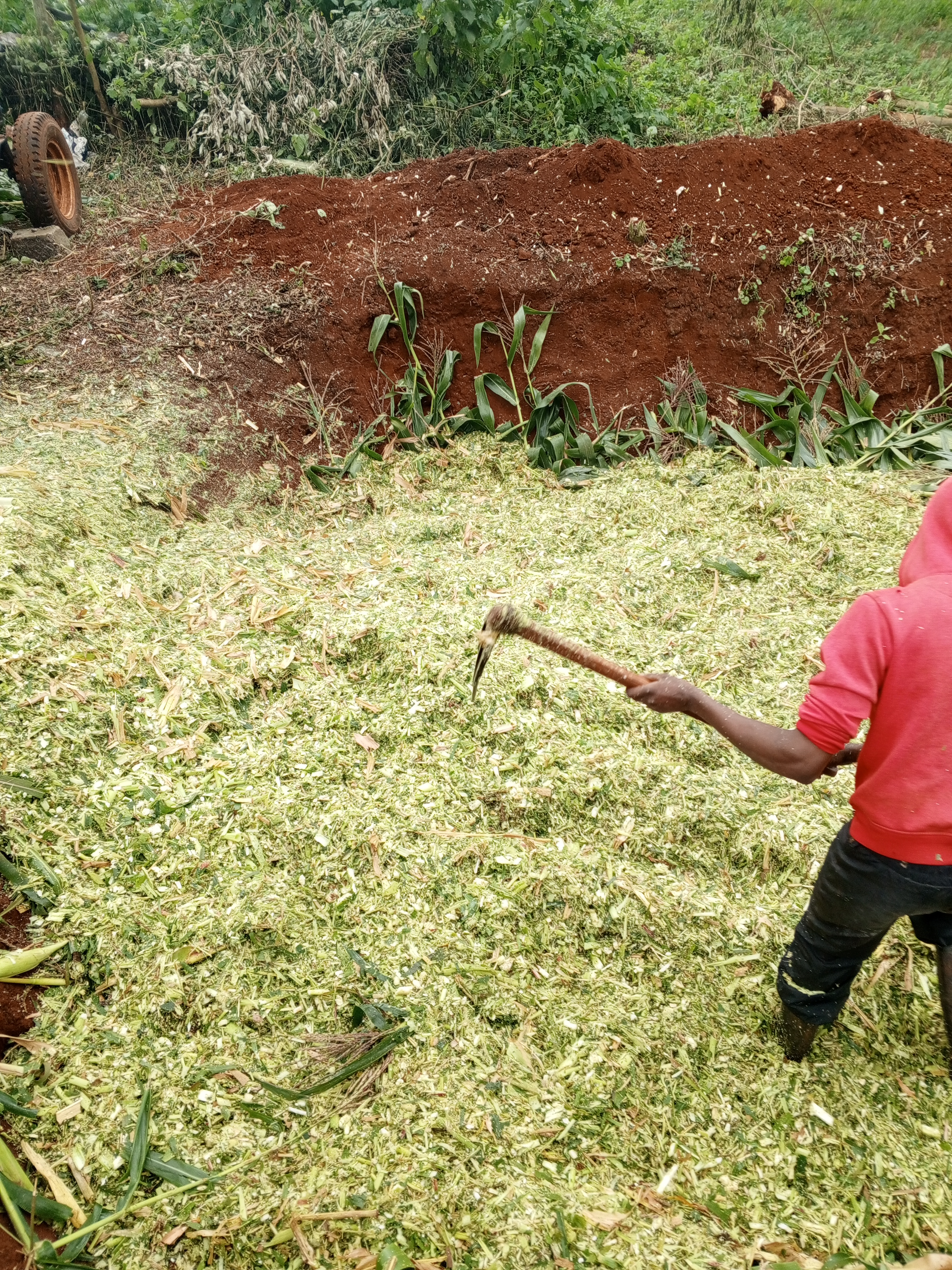SILAGE MAKING
Silage is the term used for the product formed when any green plant material is put in a place where it can ferment in the absence of air. When green fodders are in plenty they are conserved as silage to meet the demand of good quality fodder during lean season.
Silage is the green succulent roughage preserved more or less in its original condition, with minimum deterioration and minimum loss of nutritive constituents of fodders. The process of conserving green fodder is called as ensilage. Silo is the receptacle in which silage is made. Green, fruity silage is the most palatable and nutritious type with a DM (dry matter) of 25-35%.
During ensiling, fermentation of sugars forms acids and breaks down some of the forage proteins into simpler compounds, including ammonia.
Advantages:
- Crops can be ensiled when the weather does not permit curing them into hay or dry fodder;
- Use of silage generally makes it possible to keep more animals on a given land area;
- Silage furnishes high-quality succulent feed for any season of the year at a low expense
- Satisfactory silage can be produced from weed crops that would make poor hay. The ensiling process kills many kinds of weed seeds
- Crop from a larger area can be stored in less space as silage than as dry fodder.
Crops:
Crops rich in soluble sugars/CHO are most suitable for ensiling. eg. Maize (corn), jowar, bajra. Cultivated and natural grasses can be ensiled with addition of 3-3.5% molasses
Stage of Harvesting:
Crop should be harvested between flowering and milk stage. In general, crops with thick stems are conserved in form of silage while thin stemmed crops are conserved as hay.
Silo:
It is an air-tight structure designed for the storage and preservation of high moisture fodder as silage.
Pit silos are common. Pits are dug 2.4 to 3m depth, with variable sizes. 1 cubic meter of space is required for 400kg fodder. The size of a silo should be calculated based on the number of cows to be fed and the length of the feeding period.
Preparation:
Select crop that is to be ensiled when it has 30-35% dry matter. Crops are harvested and ensiled when ears start coming. It is always better to chop fodder first since packing is better and loss of nutrients is minimized.
Fodder should be evenly distributed throughout the pit. At the top of silo fodder should be packed 3-4 feet above ground level. It should be covered with long paddy straw or poor quality grasses on all sides and then covered with wet mud and dung to seal and prevent entry of air and water. The layer may be about 4-5 inches thick.
0.5% salt, 1% urea are added to cereals and grasses to improve palatability and nitrogen content.
Temperature rises to about 27 to 38 degrees Celsius. Fermentation starts to convert green crops into silage.
Silage would be ready in 2 months.
Fermentation:
Fermentation can occur in two ways: lactic acid fermentation and butyric acid fermentation.
When fodder contains 65% to 75% moisture and enough sugar, anaerobic lactic acid bacteria becomes active, to produce a good clean- smelling silage of high quality (pH 4).
If forage is too rich in proteinaceous substances, butyric acid fermentation will dominate. Butyric acid has a sharp, disagreeable smell and such silage is not relished by animals.
Store the plant material at a moisture content of 65%-75% excluding air to minimize loss of nutrients due to respiration, to initiate growth of lactic acid bacteria rapidly, to prevent mold formation, to prevent development of aerobic organisms.
Color:
When temperature in the silo is moderate, silage tends to be yellowish or brownish green and sometimes even golden in color. This is due to action of organic acids on chlorophyll and its conversion into brown, magnesium free pigment, Phaeophytin. Silage is dark brown or black when temperature in silo the is high.
Quality:
Very good silage has acidic taste and smell, is free from butyric acid, mold, sliminess, has pH in 3.5-4.2 range, has 1%-2% lactic acid and ammoniacal nitrogen less than 10% of total nitrogen.
Good silage has acidic taste and smell, has traces of butyric acid, has pH in 4.2-4.5 range and has ammoniacal nitrogen about 10-15% of total nitrogen.
Fair silage has ensiled material with some butyric acid, slight proteolysis, some molds, pH 4.8 and above and 20% ammoniacal nitrogen.
Checklist for making good silage:
- Avoid bad weather at the time of harvest
- Assess the quantity of crop to be harvested
- Check the condition of silo.
- Check growth stage of the crop
- Addition of molasses, salt, etc.
- Proper filling of silo
- Covering and sealing of silo

- Log in to post comments












